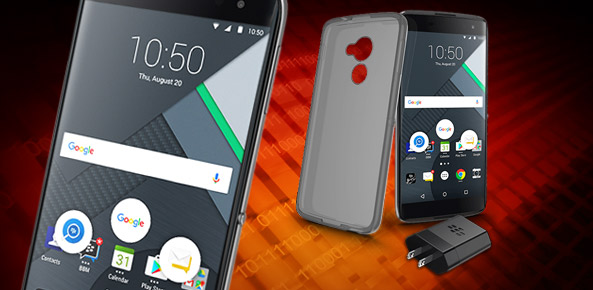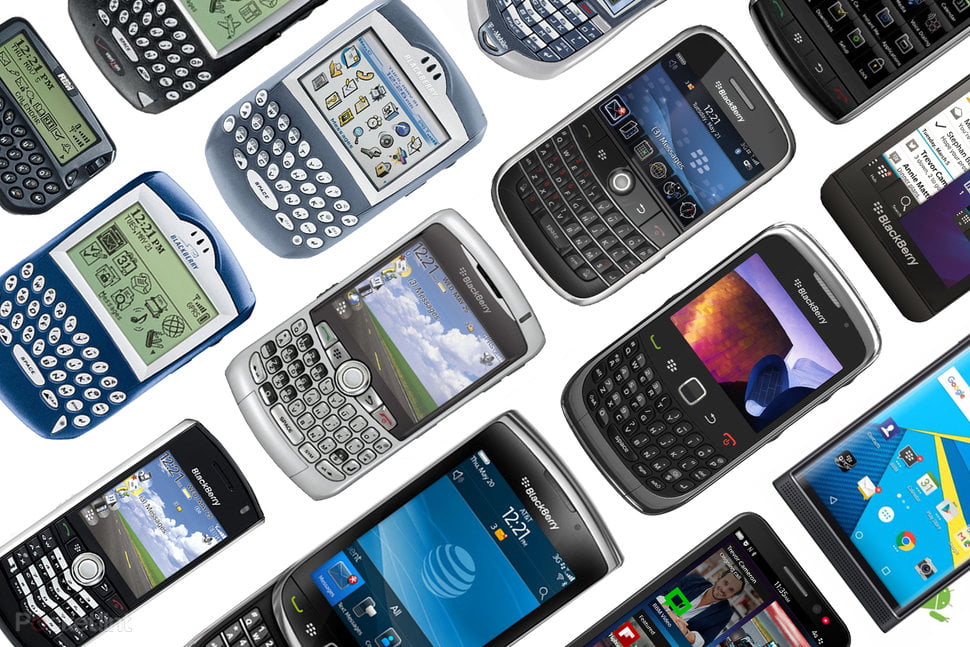
, Blackberry announced it had licensed out its phone brand to China’s TCL to market their phones under the Blackberry moniker.
The deal has limitations, as BlackBerry is working on a similar deal in India, has another in Indonesia with BB Merah Putih, and the agreement does not apply to much of Southeast Asia.
Clues that TCL might effectively take over the BlackBerry name were evident in the realease of the DTEK60, which strongly resembled the TCL Alcatel Idol 4 according to Android Police. But the announcement brought about a couple really weird but certainly clickable flow of bell-tolling headlines.
MakeUseOf went with “BlackBerry is dead in all but name,” with the site’s writer Dave Parrack penning, “So, BlackBerry the company is alive and well and managing just fine. But BlackBerry the brand is deader than a dead thing which died mourning the demise of the dodo. Or something.”
Something? I guess. Okay. Whatever. Then there was Matthew Hughes over at The Next Web with the stylistic headline “Yep. BlackBerry is Dead.”
He continued in the most eloquent way possible, “After six years of slowly circling the drain, like an un-flushable hunk of stool, the embattled company recently announced in October that it would cease to design its own handsets, instead releasing re-branded handsets from other manufacturers.”
Stool is right from one perspective, I guess. Neither of these assessments can look past phones, and whose assessments of BlackBerry coincidentally match the analogy that Hughes published.
The DTEK60 [pictured above] by BlackBerry had all the telltale signs of TCL phones according to Android observers.
BlackBerry is the example of how to pivot a dinosaur in a changing market. The company’s phones not only live on and will make the company money through its licensing deals (a new BlackBerry model BBC100-1 was spotted in the wild within hours of the TCL announcement), but BlackBerry’s software and deep tech strategies are paying off in big ways.
Just last month, BlackBerry announced it would back a trial of self-driving cars in Waterloo, Ontario, the company’s hometown. The company’s BlackBerry QNX subsidiary will use a Lincoln (a subsidiary of Ford) for its part of the trial, working alongside the University of Waterloo’s Centre for Automotive Research and Erwin Hymer Group.
And this is just the beginning of BlackBerry’s software offensive.
Blackberry Rebuilds
This is the sexiest news BlackBerry has had outside the phone world, but they have been making deals for years designing what should be considered the best pivot by an again technological giant in the digital age.
BlackBerry’s stock has been stable since mid-2012, hovering a little above $10 a pop over most of that period. Of course, that does not begin to approach where the company was in mid-2007 ($241.90). They aren’t the only company that has been skewered in the media for their phones’ fall from grace. Finland’s Nokia has also been ceremoniously roasted.
Chest-beating their way through 2013 with the release of BlackBerry 10, Z10, and Q10. But that was after a year of delays, too long in the smartphone market increasingly dominated by Apple and the iPhone. BlackBerry’s keyboards were dying, and they knew it.
They saw the writing on the wall sometime around mid-2014, when they laid off 4,500 workers and took a $1 billion loss. Fairfax Financial Holdings almost acquired the company that fall, but in the end invested CA $1 billion and placed John Chen in the CEO’s chair to replace Thorsten Heins.
BlackBerry’s new business model reflects another hardware giant changing with the markets: Motorola. The company split its phone brand off entirely in 2011 as Motorola Mobility, while keeping the Motorola Solutions name to focus on emergency communications management.
Motorola Solutions, whom we profiled back in January, has over a dozen investments in communications and emergency tech with their portfolio growing: BriefCam, BlueLine Grid, Rivkom, AgentVI, Cleversafe, CyPhy, SST, TRX, Eyefluence, SceneDoc, assistant.ai, and VocalZoom.
But BlackBerry has a more expansive portfolio of services, as seen in cars, cyber security, IoT, and what they call the “Enterprises of Things.”
Blackberry has not taken any shares in startups during its rebuilding phase, electing to straight out acquire companies to build branches of its new business.
In 2014 they grabbed mobile services company Movirtu, then workplace collaboration platform WatchDox in April 2015. AtHoc came in that July, followed by a $425 million acquisition of mobile security outfit Good Technology two months later. So far in 2016 they’ve scooped up cyber security startup Encription from just outside Birmingham, England.
The result?
BlackBerry’s revenue for software and services exploded in Q2 2016, up to $156 million, up 111 percent on Q2 2015 according to the company.
“We are reaching an inflection point with our financial picture stable and our pivot to software taking hold,” BlackBerry CEO John Chen told reporters at the end of September.
Gartner ranks BlackBerry first in several categories dealing with mobile information security, including commercial services, government services, shared devices, shared data, and connections between employee and non-employee systems.
You Might Be Driving a BlackBerry in a Few Years
WatchDox is now BlackBerry Workspaces, a highly secured platform for coworkers to share and edit files. Blackberry Enterprise Identity enables single sign-on for multiple programs at once, with Blackberry 2FA streamlining and automating multilayered authentication.
They claimed nearly 700 new B2B buyers for their BlackBerry Enterprise Mobility Suite and new business for their emergency communications software AtHoc, a company they acquired in 2015 for $250 million.
And finally, the company announced BlackBerry Secure for enterprise IoT security just a week ago, a summary of parts from all their recent acquisitions Good Technology, WatchDox, AtHoc, and Encription. Their reach could become more pervasive in other verticals as well.
Back in 2014, they made a foray into medicine and invested $10 million into NantOmics toward their NantOmics Cancer Genome Browser for cancer diagnostics. They are also looking at medical cyber security, serving as a co-author to the DTSec security standard to protect insulin pumps alluding to vulnerabilities in cardiac implants and other devices where the company might step in.
“One thing we can be sure of is that soon there will be another disturbing report of vulnerable life-critical medical devices that further erodes consumer confidence,” wrote BlackBerry Chief Security Officer David Kleidermacher in September. “By using the DTSec model, we can ensure caregivers and patients will not incur undue risk from lack of awareness about which products are secure and which are not known to be secure.”
But cars are the future.
BlackBerry recently inked a deal with Ford to continue developing new software for its Sync3 in-car infotainment system with an eye toward more autonomous technology. Ford wants a line of autonomous vehicles by 2021, so switching software partners within five years of their goal is not a likely scenario.
That agreement places BlackBerry in a very exclusive club. Uber, as much an AI company now as it is a ride-sharing company, has partnerships with Chevrolet and Volvo. US ride-sharing rival Lyft has a prominent agreement with General Motors (GM). Google works with Fiat Chrysler (FCA) to develop autonomous minivans. Apple also has its own self-driving vehicle division.
BlackBerry is going to be big when it comes to connected and autonomous vehicles. They have Blackberry Radar installed in 1,500 trucks belonging to the Caravan Transport Group and a new agreement with Karma Automotive to secure updates to connected car software.
For all the death knells tolling, there is a hefty chance you will see the BlackBerry name beyond the dashboard in the not-too-distant future. You might even be driving one.
[SOURCE:-Sci Tech Today]




